Basically, all visitors to Korea have heard about a place called Incheon – for the simple fact that the city 28 kilometers west of the capital Seoul is home to the country’s busiest airport. But this major hub is by far not all Incheon has to offer. In this post, I’m sharing with you the best things to do on a day trip to Korea’s only official Chinatown.
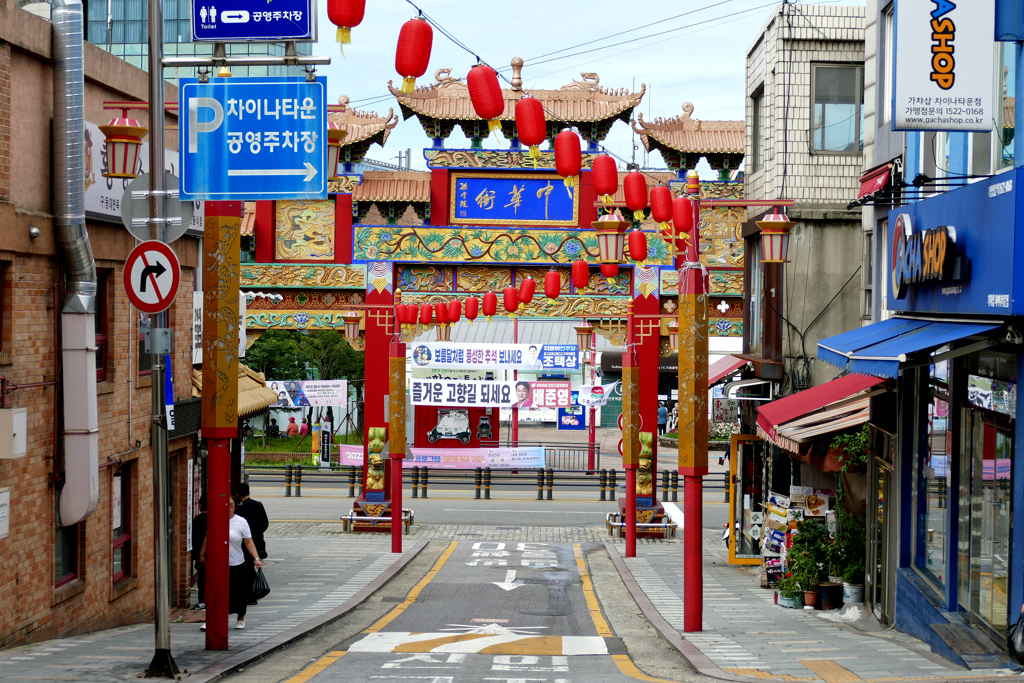
More Than An Airport
Tons of visitors to Korea have been to Incheon without having seen it. They only visited the international airport, and that’s it.
However, with almost 2.9 million inhabitants, Incheon is the third largest city in South Korea after Seoul and Busan. Yet, due to its proximity to Seoul, it has always been considered the capital’s satellite city despite its size. Although Incheon is politically autonomous, the cities have grown almost seamlessly into one. Even their subway systems operate as one.
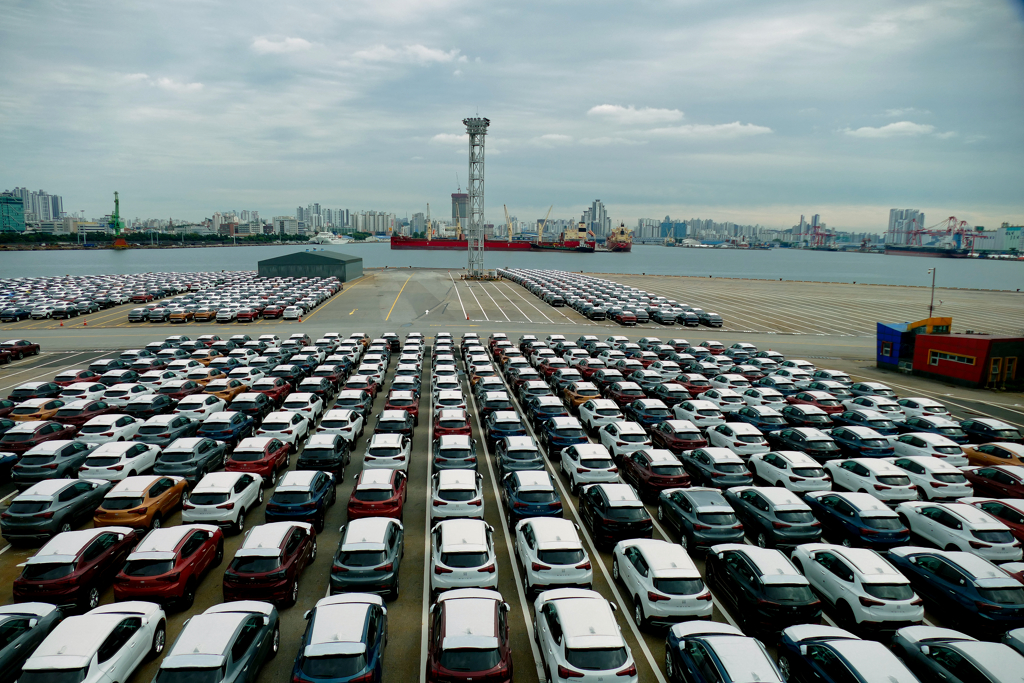
When the commercial port of Incheon opened back in 1883, the city had as little as 4,700 residents. Eventually, significant battles were fought off the coast of Incheon during the Russo-Japanese War in 1904 as well as during the Korean War in 1950. It was also the entrance gate for the troops supporting South Korea in the war. Finally, the port of Incheon played a vital role as a bustling transportation hub in South Korea’s economic boom in the late 20th century.
Chinatown
Most guidebooks recommend a day trip from Seoul to Incheon mainly for its only official Chinatown in all of Korea. When it was established in 1883, it was actually also one of the earliest Chinese communities away from the motherland.
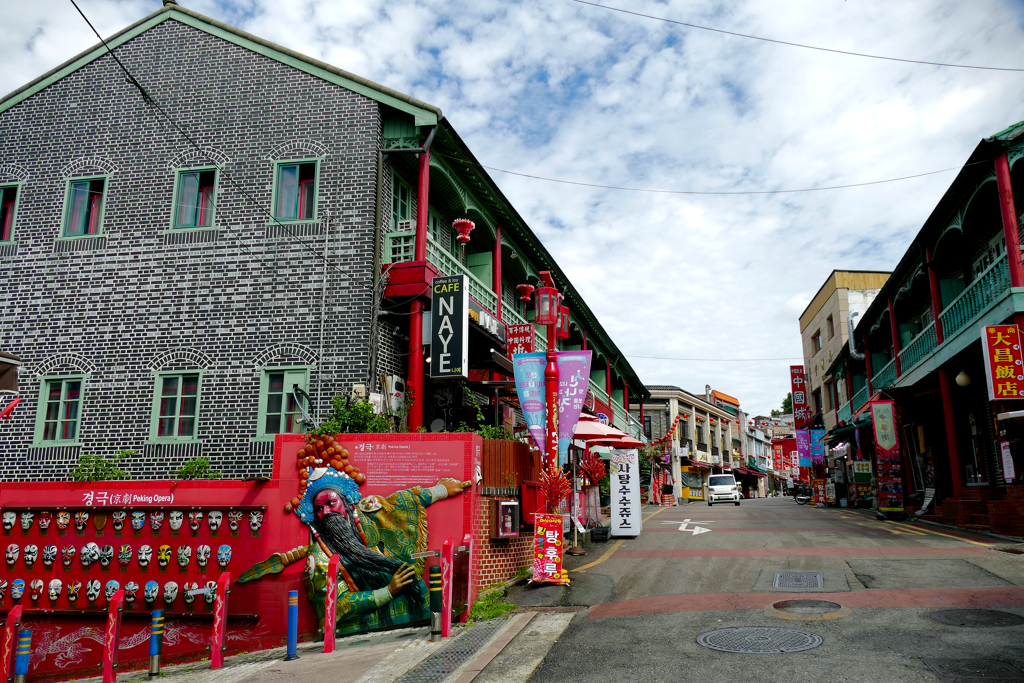
Korea pushed the country’s international trade by signing the China–Korea Treaty in the late 19th century. Then, following the founding of the port, Chinese immigrants made their new homes in the city. Here, they maintained their customs and traditions. To this date, buildings in red and gold as well as signs written in Chinese line Chinatown-ro and the adjacent alleys. In restaurants, Chinese-Korean fusion dishes such as jajangmyeon, jjamppong, and tangsuyuk are served alongside truly authentic Chinese cuisine. Yet, Incheon’s so-called Chinatown is still widely a residential area and home to second- and third-generation descendants of the first migrants of the Qing Dynasty.
Nevertheless, around the same time the Chinese came, Japanese trading branches were established, among them a consulate, a bank, a post office, and others. You can still admire the beautiful Japanese-style architecture in the streets east of the famous Cheongil Jogyeji Stairway.
Paifang
The moment you step off the Incheon subway station, you are facing Chinatown’s most iconic sight, the 11-meter high entry gate, the so-called Paifang.
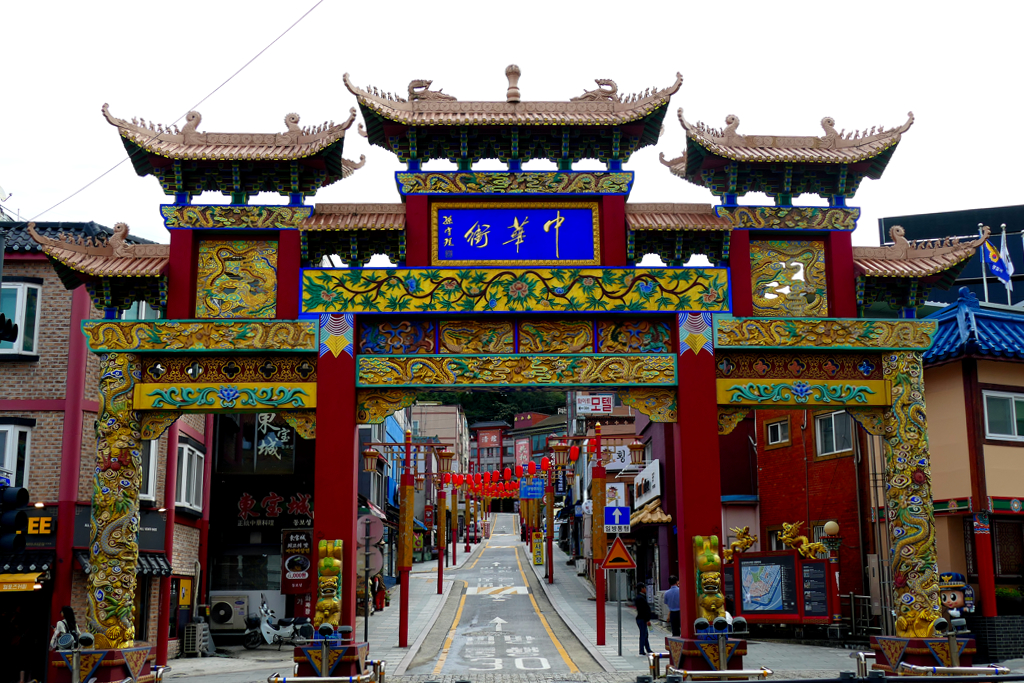
The first settlers believed it to keep bad spirits at bay. Also, the Chinese residents used to pray at the gate. Today, it is a historical relic of past times, however, it welcomes every visitor to the bustling streets of the Chinese neighborhood.

As you step through the gate, the street lined with Chinese-style houses bends to the left and takes you to rows of beautifully painted stairs. They show panda bears, the iconic Great Wall, and all things Chinese to reach the blue-tiled Seollinmun gate.
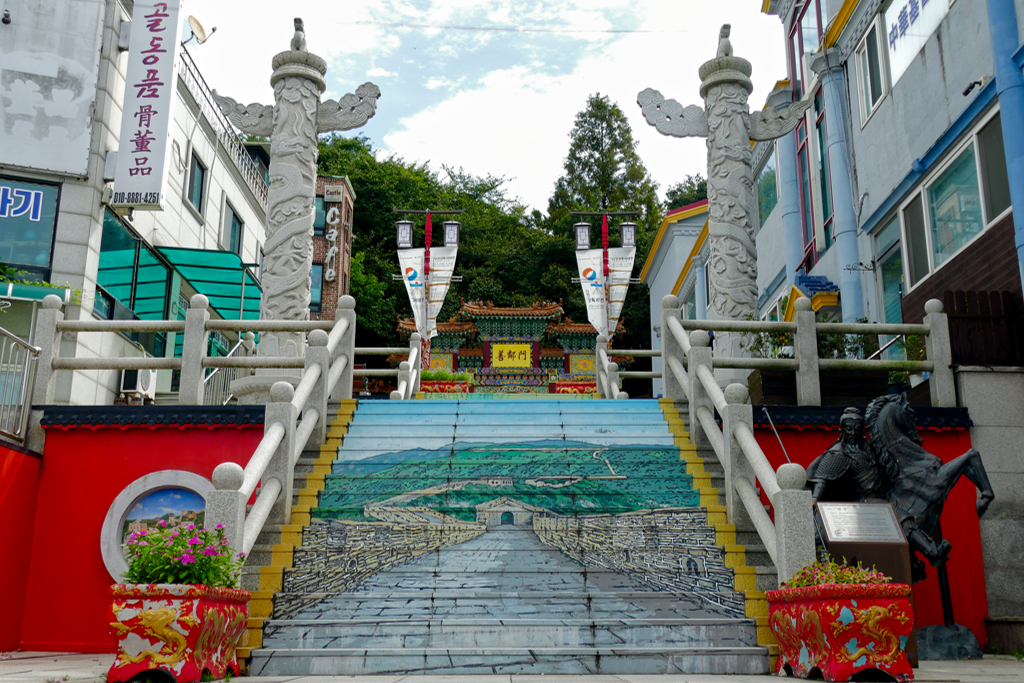
Once you reach the top, you get to admire the second of three portals, namely the blue-tiled Seollinmun Gate. Climb the steps behind it, and you’ll reach Jayu Park.
Jayu Park
Known as the first Western-style park in Korea, Jayu Park was built in 1888. Here, you can leisurely stroll on paths underneath beautiful trees. Also, you’ll get an amazing view of Incheon’s harbor area and beyond.
Referred to as Freedom Park, at the top is the centennial monument to commemorate the 100th anniversary of the treaty of 1882 between Korea and the USA. Another statue honors General Douglas MacArthur who led the so-called Operation Chromite, an amphibious assault that liberated the city. But you can also just sit on a bench at one of the rest areas or climb the pagoda to have an even more mesmerizing view of the city below. If you come here in April, you’re in for a special treat as a cherry blossom festival is held.
And since there hardly is an alluring place in Korea that wasn’t featured in a K-Drama, Jayu Park starred in A Time Called You, Business Proposal, and Love Alarm which are all on Netflix as well as a couple of movies and series that did not make it outside of Korea yet.
Samgukji And Chochanji Mural Streets
As you make your way back to the Seollinmun Gate, turn right into Samgukji Mural Street.
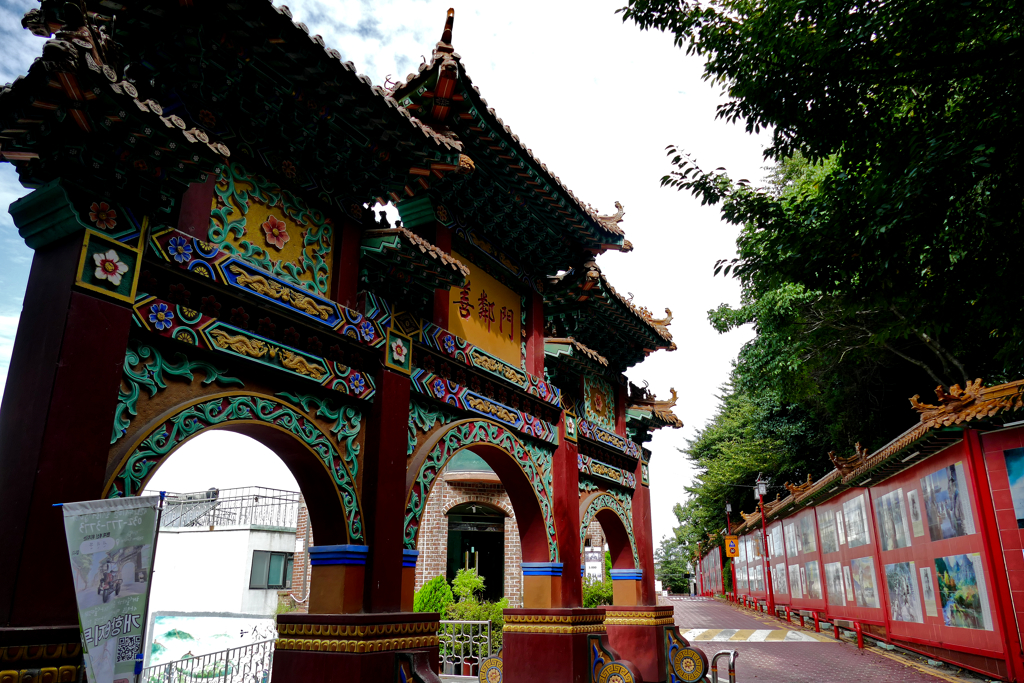
77 depictions in different sizes are telling the third-century Chinese epic Records of the Three Kingdoms. These murals are meticulously painted on glazed tiles and are basically a stoneware comic book. Very unique, very interesting – and absolutely beautiful.
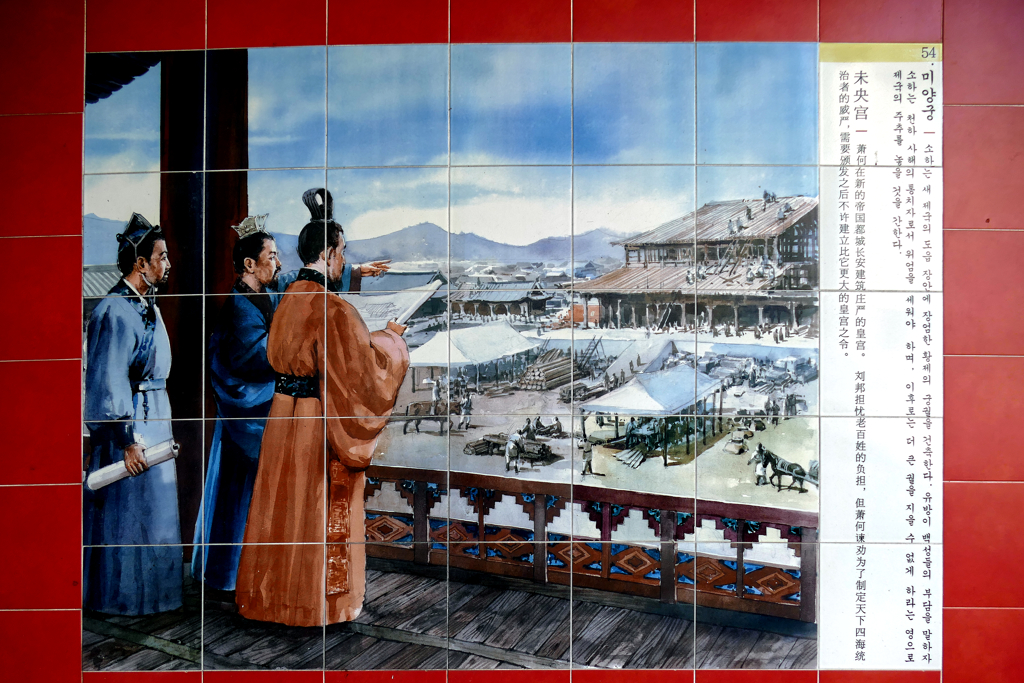
But the Records of the Three Kingdoms is not the only comic strip decorating the streets of Chinatown. On the opposite side of Jayu Park is the Chohanji Mural Street where 56 works tell about the rivalry between Xiang Yu and Liu Bang for supremacy in China.
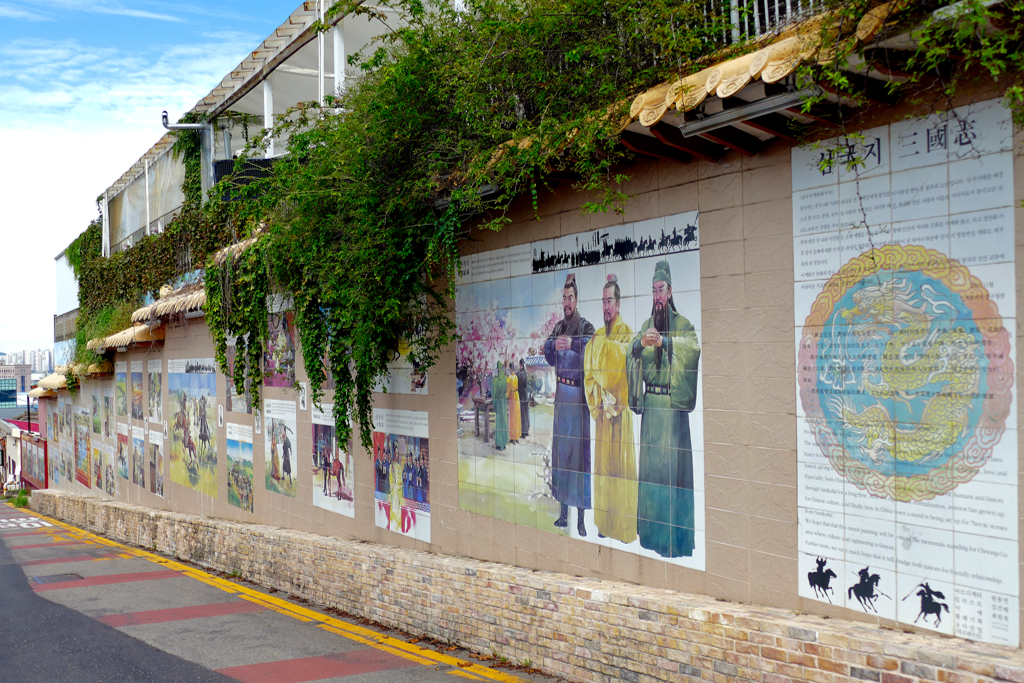
The tiles also depict the legend of Han Xin who defeated the enemy, and the wise and loyal Zhuge Liang. It’s pretty amazing how these mural streets make diving into history fun.
Cheongiljogyeji Stairway
One of Incheon’s most captivating landmarks is just around the corner from the Samgukji Mural Street. Also, the Cheongiljogyeji Stairway connecting the settlement of the Qing Dynasty with the former Japanese neighborhood is actually a fascinating piece of history.
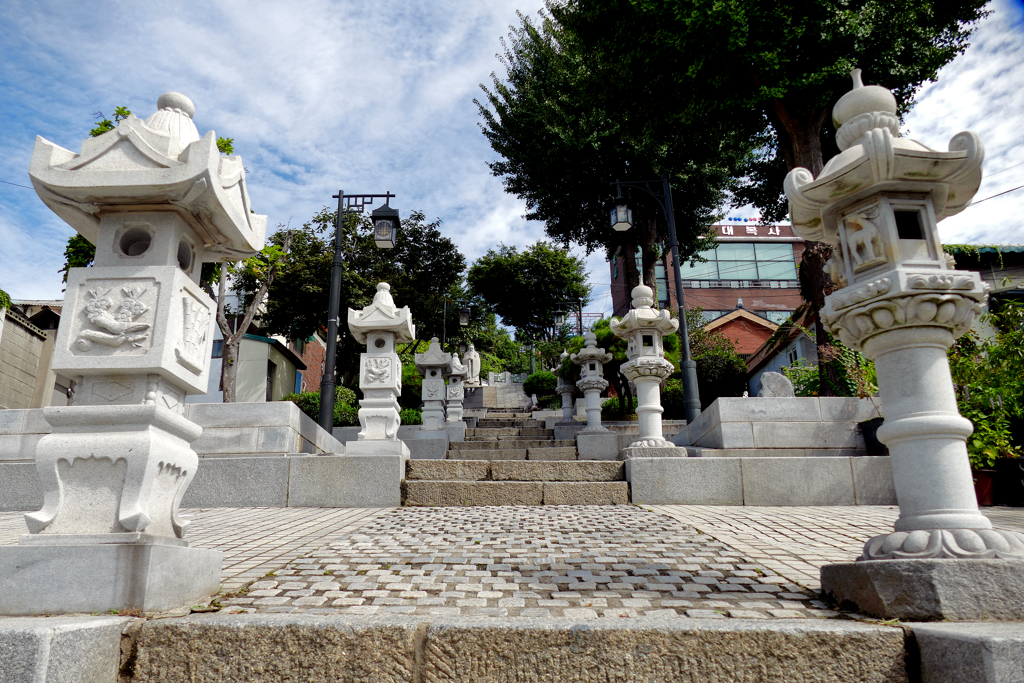
In 1884, the staircase was constructed as a border between the two settlements. Chinese-style buildings were constructed on the left side of the stairs while Japanese-style edifices stood to its right. The difference in the fashions can even be seen in the lanterns lining the stairs. The Chinese lanterns are square while the Japanese ones are more round-shaped.

At the top of the stairs, no less than Confucius is uniting both ethnicities.
It’s in the Mix
To see some of the alluring Japanese architecture, turn left at the bottom of the stairs. In this area, you’ll find the former first Bank of Japan, the old post office, and many others. Their unique architecture is clearly inspired by the Neo-Renaissane style and stands in stark contrast to the traditional Japanese houses. Today, they are housing some of Incheon’s many history museums: There is the Modern Architecture Exhibition Hall, the Museum of Korean Modern Literature, the Incheon Open Port Museum housed in the before-mentioned bank building, the Jung-gu Life History Exhibition Hall, and the Hotel Daibutsu Museum to mention just those within the former Japanese neighborhood.
Also, the next block is packed with history: Between all the Chinese architecture, the Catholic Coastal Cathedral stands out. Actually, it’s only one of many Catholic houses of worship around town. The missionary activity of Roman Catholicism started in 1889 when missionary Father Villem arrived from Pari. One year later, St. Paul’s Cathedral, also known as Dapdong Cathedral, was constructed in an eclectic style including Neo-Gothic and Neo-Romanesque elements.
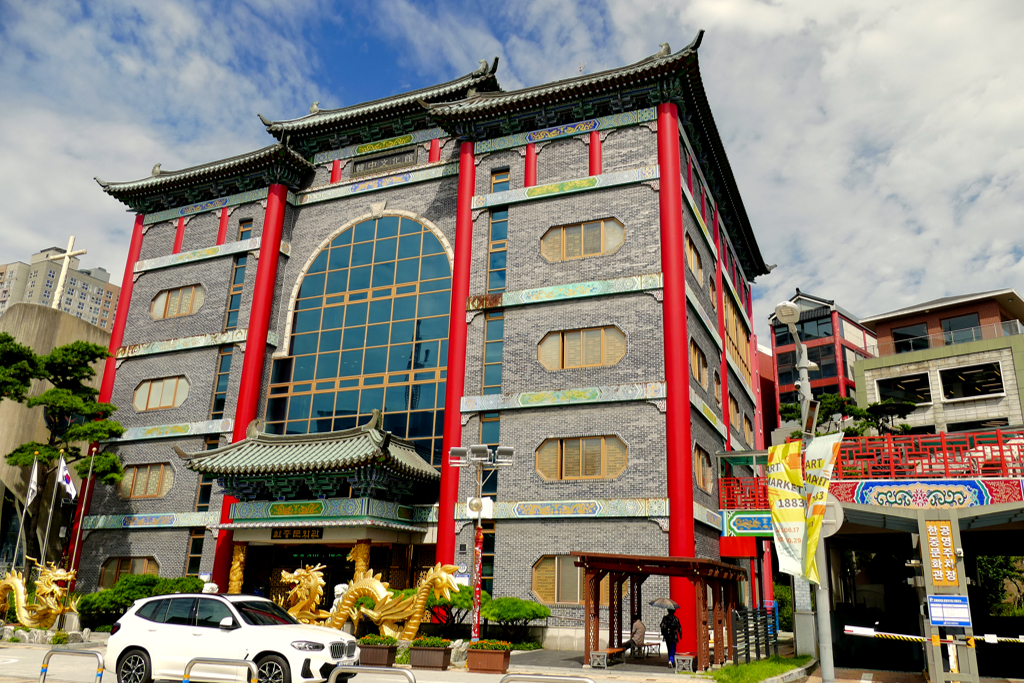
South of the Coastal Cathedral is the Martyrs’ Memorial Chapel of the Jemooljindoo. Since they squeezed this construction behind the Korean-Chinese Cultural Center, the chapel which was built in 2014, is actually quite difficult to see. It stands in the spot where Catholic believers were publicly executed in the late 19th century.
The Korean-Chinese Cultural Center is designated as a mutual learning space for history, culture, economy, and society. In addition, Chinese language lessons, movie screenings, and other events are taking place on weekends.
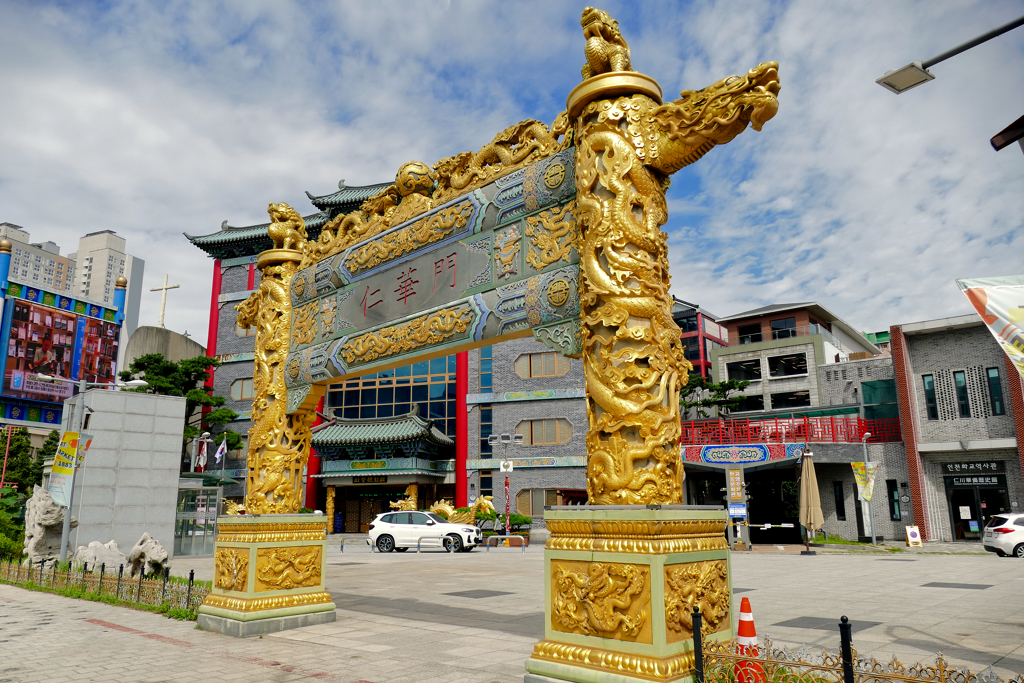
The venue is open every day from 9 a.m. to 6 p.m. and the general entrance fee is KR₩ 1,000.
World’s Largest Mural
In 2018, the Incheon city government and Incheon Port Authority commissioned 22 artists to paint a grain silo in the port. It was one of the measures to improve the negative image of the old industrial facilities. They intended to give tourism on Wolmi Island a boost. To achieve their goal, they invested a whopping 550 million ₩on!

The silo is 48 meters high, 168 meters long, and 31.5 meters wide which gives the mural a size of almost 24,000 square meters. More than 850,000 liters of paint went into the work. Guinness World Records recognized it as the world’s largest mural.
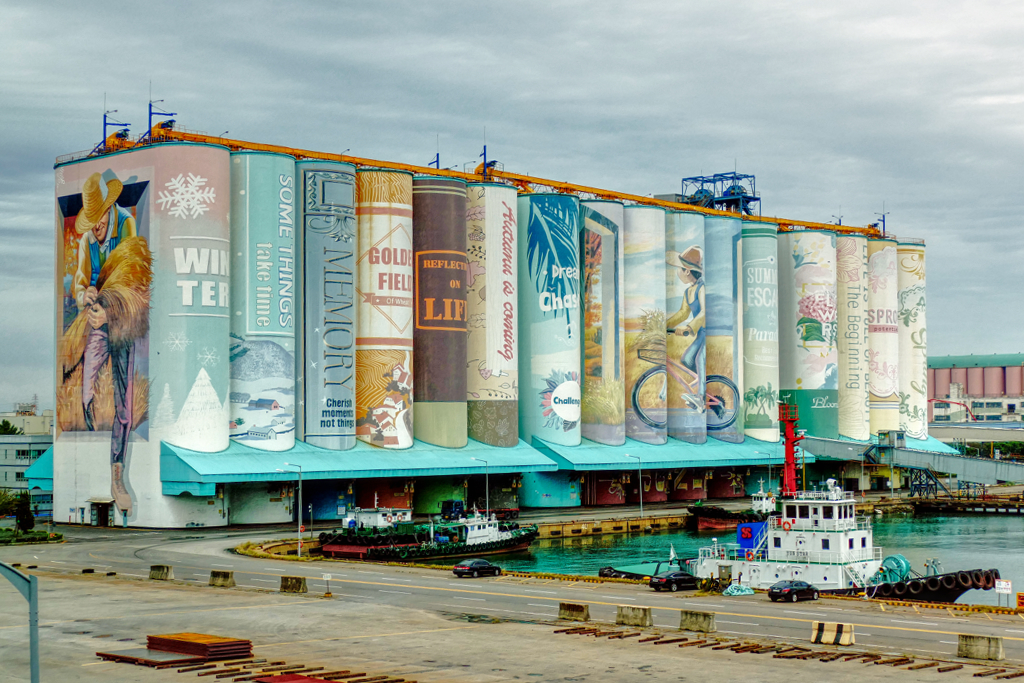
The original shape of the silo defined the design of the art project. It represents 16 books on a shelf. These books guide a young boy through the years into adulthood. They direct him with wisdom and encouragement, leading him through the four seasons, which could ultimately also be interpreted as phases of life.
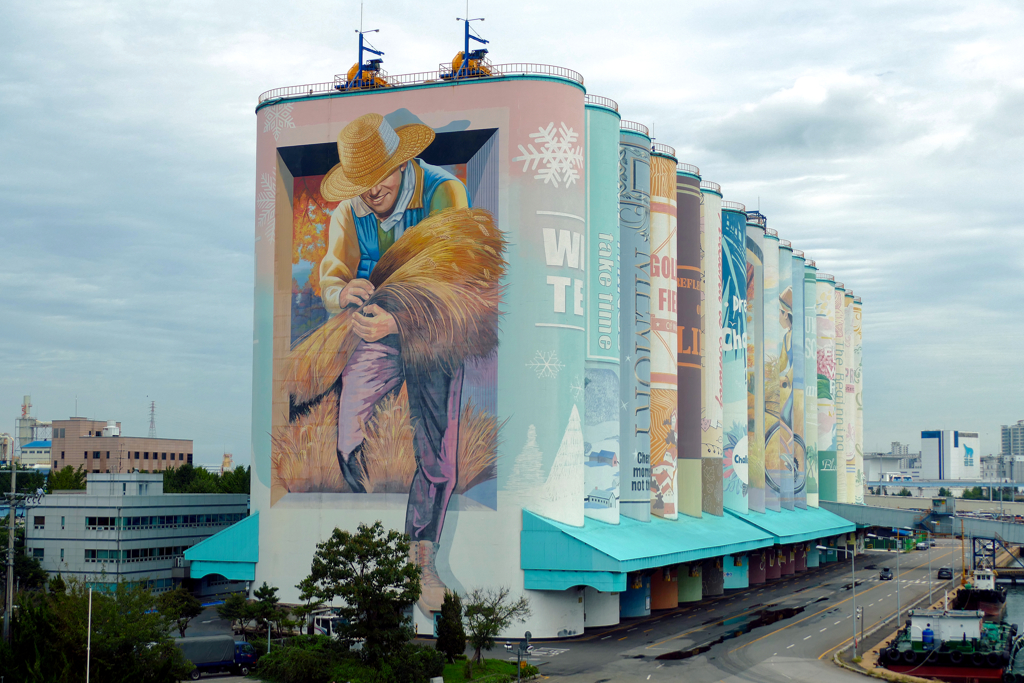
After having experienced the love Koreans have for books firsthand, I’m not surprised that this iconic mural is book-themed.
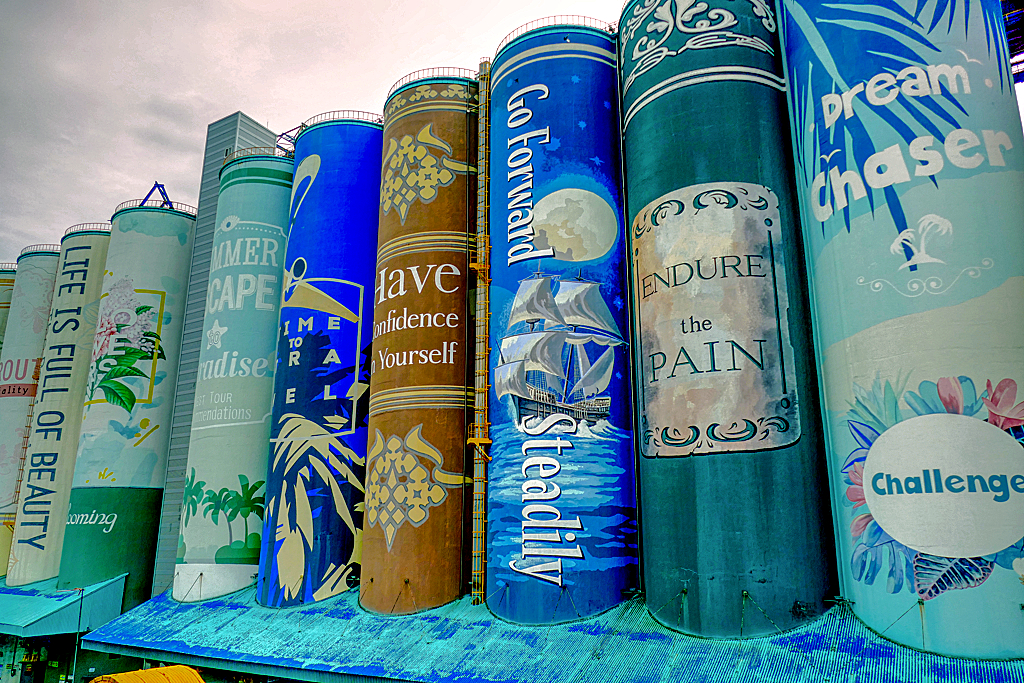
Actually, I put together a list of my five favorite bookstores in Seoul and also recommended some gripping reads by Korean novelists: Best And Most Beautiful Bookstores in Seoul.
Hidden Gem – Literally
Urban Art is totally my thing, hence, it was more for the world’s largest mural that I made it to Incheon than for the Chinese heritage.
I was all the more disappointed that there was practically no place outside the fenced harbor area to get a good view of the work.
What good is the world’s greatest work of art if nobody can see it?
Although I don’t really like traveling on tourist trains, I grudgingly decided to take a ride on the Wolmi Sea Train since the rails are at the same height as the mural.
While an extremely friendly lady explained things that were certainly very interesting – I can’t say for sure since she only spoke Korean – we drove through an amusement park that reminded me strongly of the withering charm of Coney Island. We passed a picturesque coastal road and the pier in the industrial port which was full of cars waiting to be shipped.
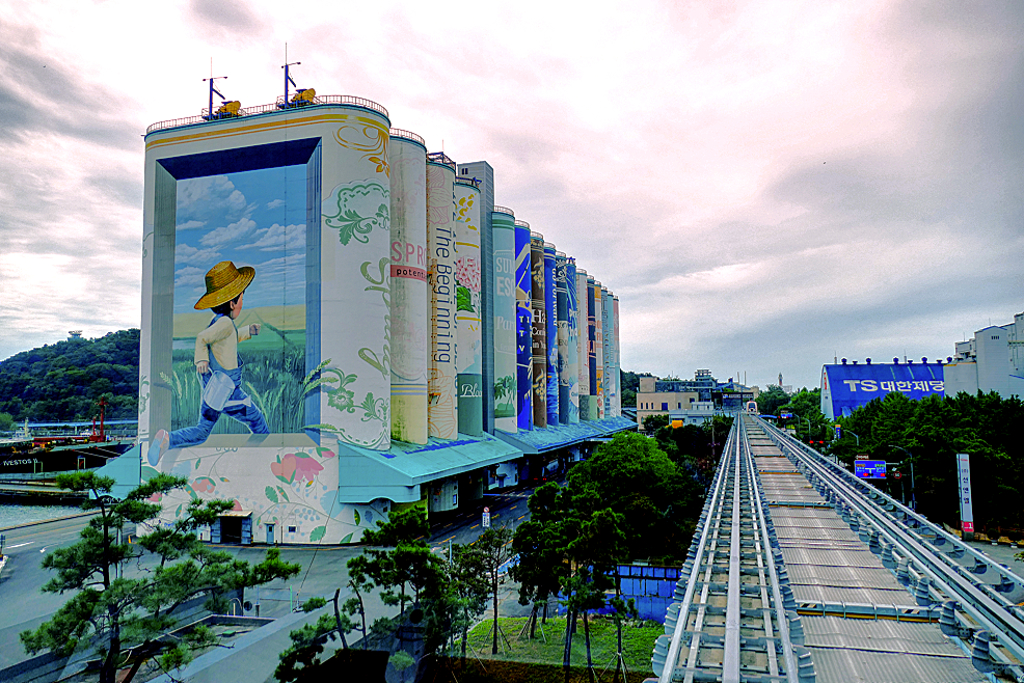
Then the tracks made a sharp curve and I finally had a clear view of the largest mural in the world!
Wolmi Island
Wolmido is a peninsula off the coast of South Korea. With a bit over one square kilometer, it is a local recreation area including a spacious park and various leisure attractions mainly alongside the promenade on the western border. It resembles a bit Coney Island, Fishermen Wharf, or the Santa Monica Pier. Although it is primarily a day trip destination and recreation area for locals, there is also a good number of hotels for those who want to spend the night.
A fun way to see Wolmi Island is by the so-called Sea Train. As it takes you around the peninsula, you get to see all the different sights. The Sea Train has four stops including one right next to the Incheon subway station. With your ticket, you can take the train three times, hence, you can get off to check out for instance the so-called Wolmi Culture Street or the
Museum of Korea Emigration History.
Anyway, the Sea Train runs every couple of minutes between 10 a.m. and 6 p.m. from Tuesday to Friday and on weekends until 9 p.m. A general ticket that you can purchase at each one of the four stops costs KR₩ 8,000.
How to Get There And Around
No trip is as easy as going from Seoul to Incheon: Just hop anywhere in the city on subway line #1 and go all the way to the final stop which happens to be Incheon. While it’s easy, it can get very long. Depending on where you board the subway, it can take up to two hours.
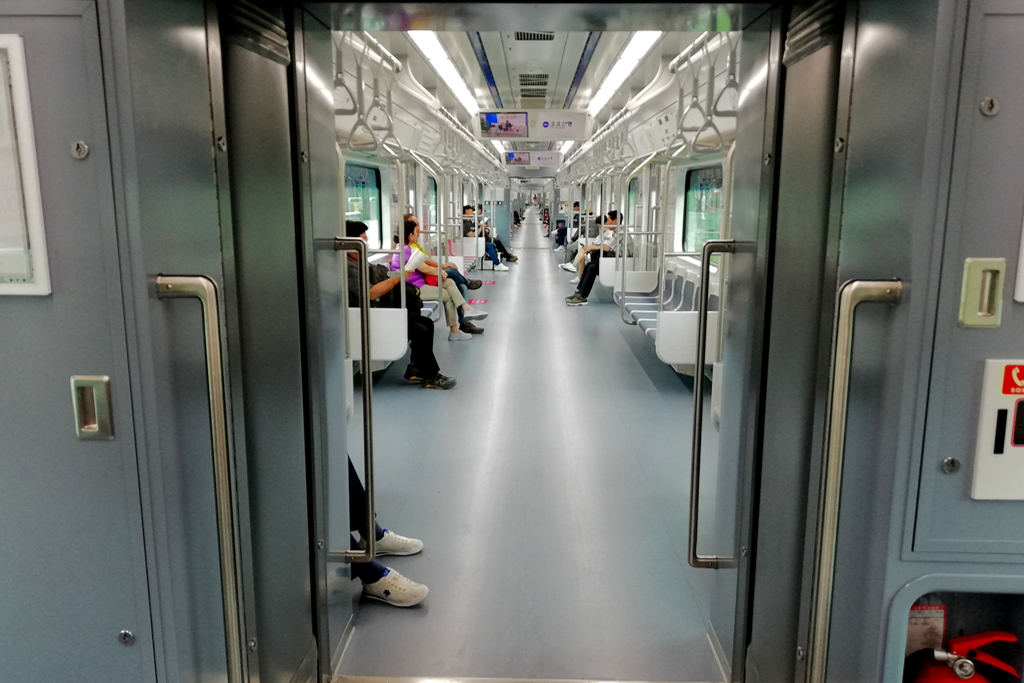
Although Incheon is the third-largest city in South Korea, the touristy places of interest are concentrated more or less around the subway station and can be easily explored by walking. If you want to visit Wolmido or other places that are farther from the main station, city buses will take you basically everywhere.
Visiting Organized
Although I’m an avid solo-travelling woman, I sometimes like to join organized tours, especially in a country like Korea where I didn’t have many opportunities to interact with locals or even other travellers.
Therefore, here are some great ideas of what to do when visiting Incheon. Especially during high season, pre-booking online will guarantee your place at the activity of your choice*:
Where to Stay
Most foreign visitors – including myself – are coming to Incheon on a day trip from Seoul. However, if you are into the Coney-Island-Fisherman’s Wharf-vibe, an overnight stay or even a couple of days on Wolmido Island might be just right for you. On the map below are some hotels where you can crash after a day full of fun and follies*:
Booking.comWhat to Eat
There are many good restaurants in Chinatown serving authentic Chinese food. However, you might want to try the famous KoKorean-Chineseish Jjajangmyeon. It consists of noodles with black bean sauce and usually pork and seafood. As it originates in Incheon’s Chinatown, it is a must-try when you visit. Obviously, you’ll find plenty of restaurants offering this delicious meal for not more than 10,000.
Map
On this map, you can see where all the wonderful places I’m introducing in this post are located.
Clicking on the slider symbol at the top left or the full-screen icon at the top right will display the whole map including the legend.
Incheon was only one of three amazing day trips I took during my stay in Seoul. I also paid Suwon a visit where I took a wonderful hike on the old city wall, and I spent lazy hours on Mallipo Beach. However, to read about other great places I’ve seen on my tour around South Korea, go to the main post and take your pick! There, you’ll also find further valuable general information that will make your trip to Korea smoother and much more enjoyable.
Pinnable Pictures
If you choose to pin this post, please use one of these pictures
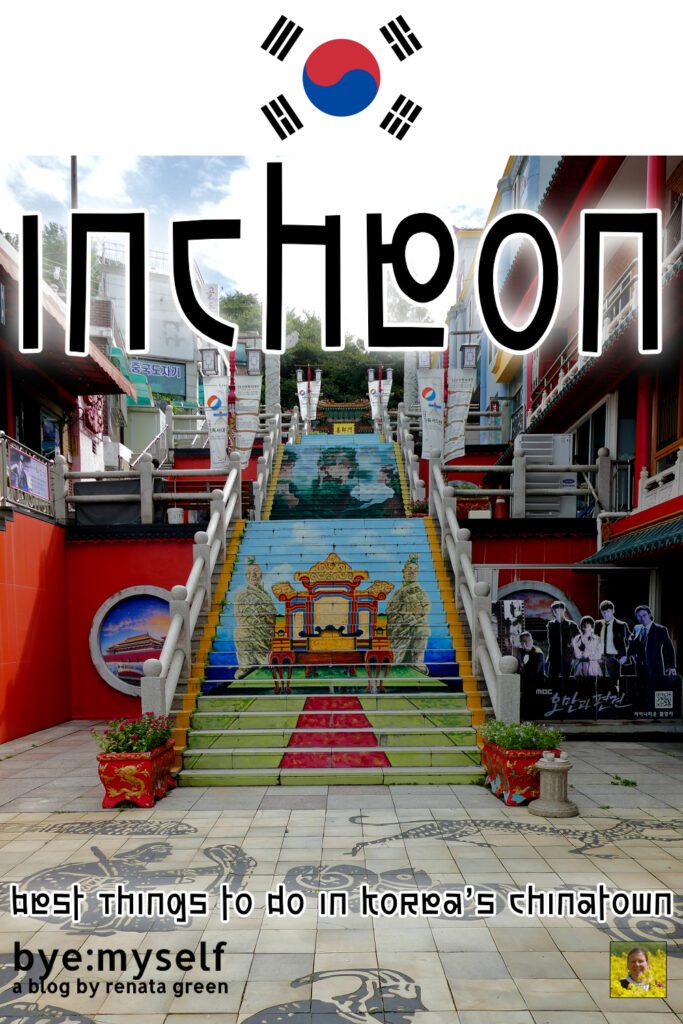
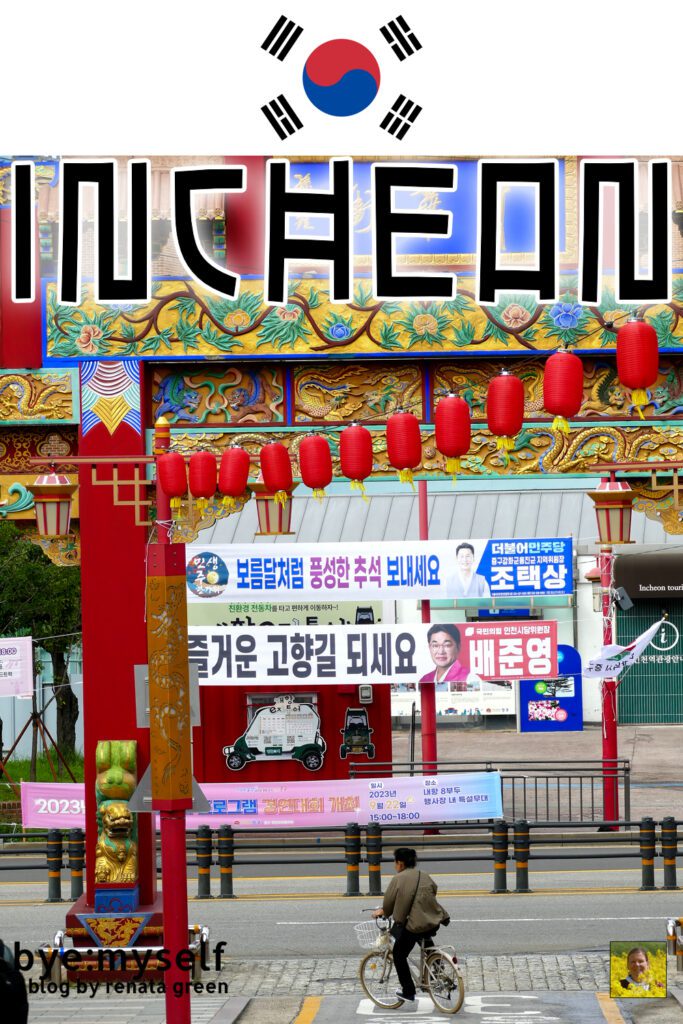
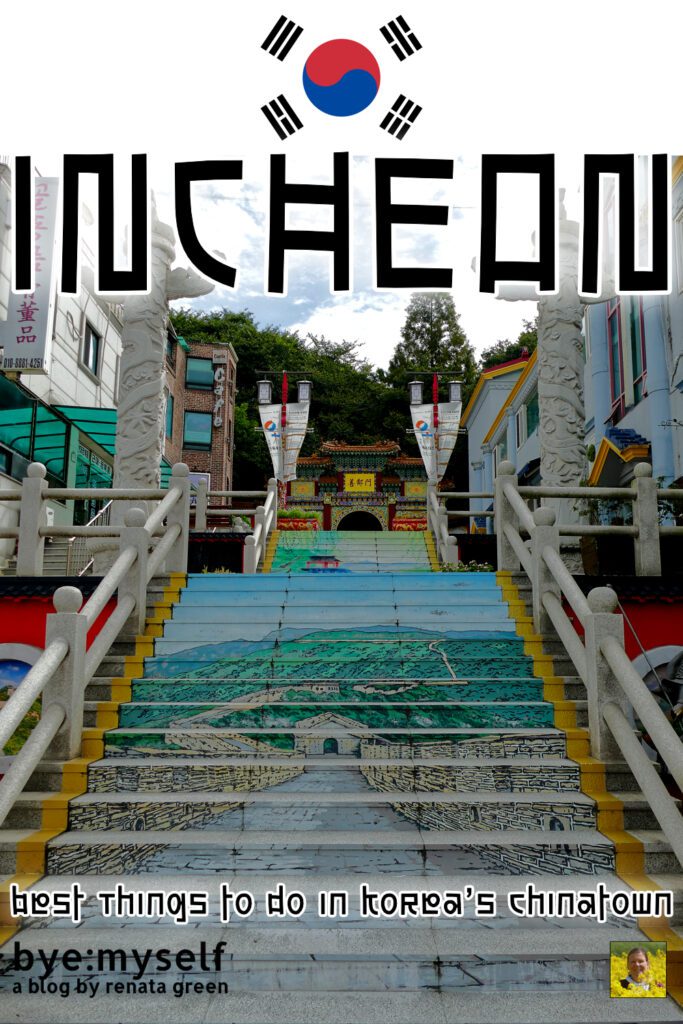
Did You Enjoy This Post? Then You Might Like Also These:
An Easy Day Trip to the Hahoe Folk Village from Andong
INCHEON – Best Things to Do in Korea’s Only Chinatown
All You Need to Know Before Visiting a Korean Spa
The Perfect Itinerary for Three Days in BUSAN
Culture Villages in Korea: Real People, Real Art
A Day Trip to the Haeinsa Temple the Easy Way
Grand Tour of SOUTH KOREA – A Guide for Individual First-Time Visitors
Individual Solo Trip to KOREA – All Your Questions Answered
*This is an affiliate link. Hence, If you book through this page, not only do you get the best deal. I also get a small commission that helps me run this blog. Thank you so much for supporting me!
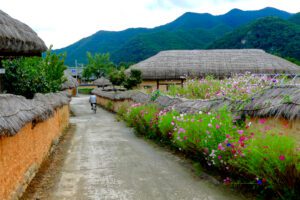
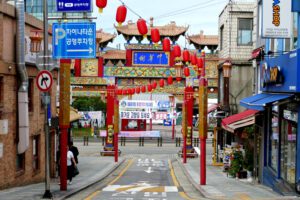
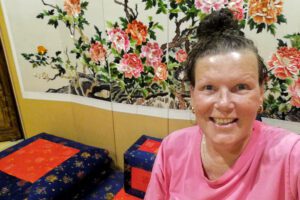
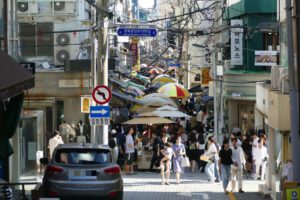
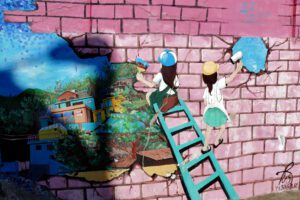
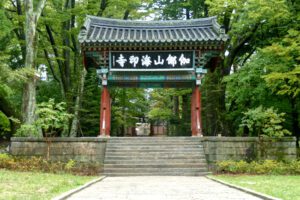
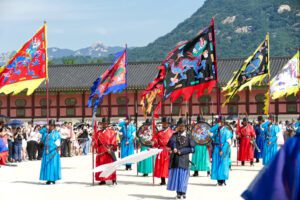
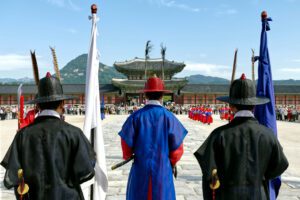
That is so interesting! Thanks for a peak into Incheon with its only official Korean Chinatown. I just wrote about “My 8 Favorite Chinatowns in the World.” This would have been one. I love that world’s largest mural! And the 3 gates. And the fact that it is connected to a Japantown.